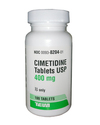Equine Sarcoid & Melanoma Flashcards
__________ is the most common tumor in the horse
Sarcoid
Comprises 20% of all equine tumors (90% of all skin tumors)
What is the etiology of equine sarcoid?
Papova virus
Related to bovine papilloma virus
What is the sex predilection for equine sarcoid?
No sex predilection
Equine sarcoid can occur anywhere on the body, but where does it occur most commonly?
Limbs
- 45% of sarcoid cases
- Hindlimbs > forelimbs
- Above tarsus/carpus > below tarsus/carpus
What are the four forms of equine sarcoid?
Verrucous, Fibroblastic, Mixed, Occult
What form of sarcoid is shown here?

Verrucous sarcoid
What form of sarcoid is shown here?

Fibroblastic sarcoid
T/F: Benign neglect may be a therapeutic option for equine sarcoid
True
Considered for small tumors that are not causing discomfort, or impeding use
T/F: Surgical excision is considered the most effective therapeutic option for equine sarcoid
False
No single approach to therapy has proved universally successful
T/F: Most sarcoid lesions that are surgically excised recur within three years
True
Most recur within 6 months
What cryogens are used for cryosurgery to remove equine sarcoid?
Liquid nitrogen, nitrous oxide, Freon
What is the average healing time for equine sarcoid after cryotherapy?
2.4 months
T/F: Most cases of equine sarcoid recur after cryotherapy
False
70% of cases are reported free of recurrence
Concerning sarcoids, which statement is most accurate?
- The rate of recurrence is less than 10% following resection
- Immunotherapy is the treatment of the choice
- They occur most commonly in the flank area
- They are locally invasive, do not metastasize, and recur commonly
- They commonly become fibrosarcomas following cryotherapy
They are locally invasive, do not metastasize, and recur commonly
T/F: Sarcoids are nonmetastatic skin tumors
True
T/F: The four categories of sarcoids are based on the gross appearance. Sarcoids are the most common skin tumor of the equid.
True
Brachytherapy (CCDP) for treatment of equine sarcoid involves injection of what anti-neoplastic agent into the tumor?
Cisplatin
- Treatment usually includes a series of 4 intratumoral injections of cisplatin given at 2 week intervals. The overall cure rate is 93%
- MOA: Inhibition of DNA synthesis
Xxterra® is a caustic agent used as immunotherapeutic treatment of equine sarcoid.
In a general sense, what does it do?
Changes the antigenicity of the sarcoid
- The body recognized the cells as foreign and produces antibodies
- Apply Xxterra® to the sarcoid and place a bandage over it for 4 days
How do you definitively diagnose equine sarcoid?
Histopathology
It is difficult to differentiate between benign and malignant melanoma in horses. In aged gray horses, melanoma is more likely to present:
Benign
It is difficult to differentiate between benign and malignant melanoma in horses. In non- gray horses, melanoma is more likely to present:
Malignant
Melanoma lesions may be solitary or multiple. Where do they most commonly occur?
Perineum or ventral surface of the tail
What H-2 receptor antagonist has been proposed for treatment of melanomas in horses?
Cimetidine

T/F: Light-skinned cattle are more commonly affected with melanoma than dark-skinned cattle
False
Dark-skinned cattle are more commonly affected


